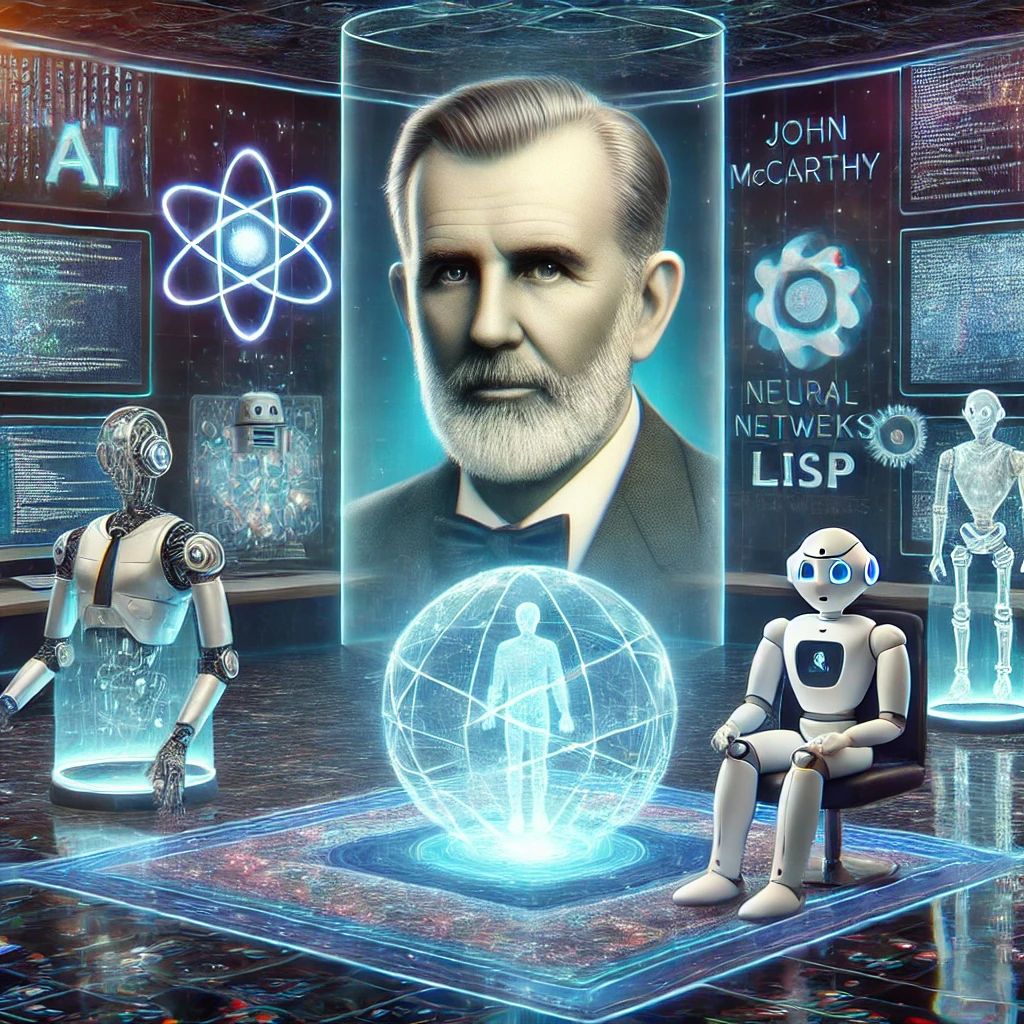The world has undergone a major transformation due to Artificial Intelligence (AI) which has reformed both commercial sectors and industrial operations and societal livelihoods. The individual credited with being the writer of artificial intelligence remains unknown to most people. John McCarthy serves as the originator of AI because he actively pioneered its present form as a computer scientist and futurist.
Who is John McCarthy?
John McCarthy established his position as an American scientist who specialized in computer technology while simultaneously working as a mathematician and pioneer in developing artificial intelligence. The scientist born in 1927 established Artificial Intelligence (AI) as a term in 1956 and contributed basic principles to AI scientific research.
Key Contributions of John McCarthy:
- He created the Artificial Intelligence (AI) term during 1956.
- Developed LISP, the primary programming language for AI research.
- Computing received Time-Sharing as an introduction from him.
- He dedicated himself to developing artificial intelligence principles which use logic-based solutions to solve problems.
- His work resulted in global expansion of AI research laboratories throughout the world.
- He promoted both machines learning from themselves and controlling their own reasoning operations.
- He proposed using AI as a remote computing approach.
The Dartmouth Conference: The Birth of AI
AI history records the Dartmouth Conference in 1956 as its most pivotal event under the direction of John McCarthy. At this event all AI concepts began with John McCarthy leading researchers Marvin Minsky and Claude Shannon and several more to discuss intelligent machine possibilities.
Significance of the Dartmouth Conference:
- Defined AI as a field of study.
- The conference created the fundamental principles which construct machine learning and AI problem-solving and reasoning methods.
- The event gathered major scientific experts to make progress toward AI research.
- AI laboratories started to form in leading universities as a result of this innovation.
LISP: The AI Programming Language
In 1958 McCarthy made one of his defining achievements by creating the programming language LISP (List Processing Language). Components from the LISP programming language created in 1958 continue to serve as the main tool in present-day AI research applications.
Features of LISP:
- Supports symbolic reasoning and machine learning.
- AI systems together with expert systems and robotic solutions make use of LISP.
- Computers were able to explore new programming language development thanks to LISP.
- This feature made it possible to define functions that use recursion as well as implement dynamic data structures.
John McCarthy dedicated his research toward developing solutions for AI
According to McCarthy machines demonstrated capabilities to emulate human intelligence through their ability to reason logically. The problem-solving techniques alongside knowledge representation and heuristic programming methods developed by him directly influence current AI systems.
Key AI Concepts Introduced by McCarthy:
- Circumscription Theory – A logical approach to AI problem-solving.
- The method known as Situational Calculus enables reasoning within environments which experience changes.
- Time-Sharing in Computing became possible through multiple users’ concurrent computer interactions which later evolved into cloud computing technology.
- AI-Based Game Theory – Explored AI’s role in competitive decision-making.
- The system should adapt its learning capabilities through machine self-evaluation from its errors.
The Impact of John McCarthy’s Work on AI Today
The ideas of McCarthy continue to direct modern technology through developments in machine learning as well as robotics and automation development.
- McCarthy’s AI work continues to affect how AI functions in modern times.
- Machine Learning & Deep Learning – AI algorithms for self-learning.
- Natural Language Processing (NLP) – AI understanding human language.
- AI in Robotics – Autonomous robots and AI-driven automation.
- AI in Everyday Life – Virtual assistants like Siri and Alexa.
- Cloud-Based AI Services – AI accessibility over remote networks.
- AI in Space Exploration – Used in NASA’s Mars rovers.
Awards and Recognition
Through his work in AI John McCarthy received several prestigious honors and awards.
Notable Awards
- To computer scientists the Turing Award represents the greatest recognition they can receive (1971)
- National Medal of Science (1991) – Recognized for his impact on AI research.
- Kyoto Prize (1988) – Awarded for contributions to information science.
- Benjamin Franklin Medal in Computer Science (2003).
- IEEE Intelligent Systems Hall of Fame Inductee.
The Legacy of the Father of Artificial Intelligence
John McCarthy created the essential components which lead to modern AI development and his research continues to influence designs of future intelligent machines. Every part of modern technology utilizes the innovations McCarthy developed including AI-powered chatbots and self-driving cars.
How McCarthy’s Legacy Lives On:
- AI research institutions continue to develop their work at an increasing rate.
- The teaching of AI content as presented by McCarthy spreads through universities across the globe.
- AI is currently positioned to serve all major sectors of healthcare and finance as well as education.
- Discussions related to ethical AI derive from concerns McCarthy established early on.
- Businesses extensively use decisions made with AI assistance.
Future of AI Inspired by John McCarthy
The innovative concepts developed by McCarthy provide direction for current researchers to develop advanced AI systems. Researchers develop general AI systems which should be able to do tasks that exceed their programmed functions.
Key AI Trends Inspired by McCarthy:
- Explainable AI (XAI) – Making AI decision-making transparent.
- Specific applications of AI with Quantum Computing serve to boost AI operational capabilities.
- AI enabled to learn independently without human supervision is known as Self-Learning AI Systems.
- Ethical AI Development – Ensuring fairness and accountability.
- AI systems used in smart cities operate to handle urban resources as well as enhance quality of life in cities.
- Autonomous AI Systems – Robots with independent decision-making.
Conclusion
The fields of computer science experienced a transformation through revolutionary work done by John McCarthy who established artificial intelligence. The development of modern AI-driven systems owes its existence to his work in AI programming as well as machine reasoning and logical problem-solving fields. Artificial intelligence operates with enhanced power through automation and deep learning and intelligent computing thanks to his work. Through his work McCarthy has driven AI progress which now commands societal change in technology development. People continue to honor his legacy through AI technological advancement which sustains his insights about machine capability growth even as AI innovations expand.





